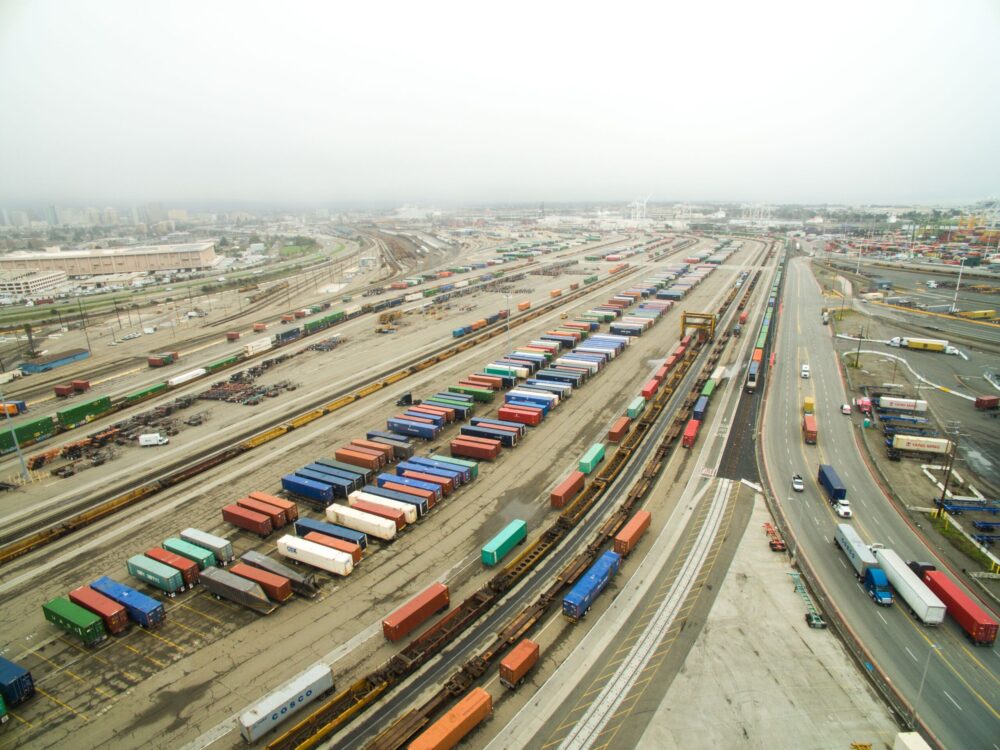Many people understand the supply chain at a large scale—imported goods are received via ocean carriers, the goods are then removed from the ships, sent to warehouses and distribution centers, and eventually, end up at your house, office, or wherever your final shipping destination was. However, this is a highly simplistic view of a complex global system. In this blogging series, we’re going to drill down into various parts of the supply chain to shed light on the many factors impacting the supply chain.

Today we’re going to be talking about drayage specifically. Drayage is defined as the movement of a container or trailer to or from the railroad intermodal terminal to or from the customer’s facility for loading or unloading. Drayage is often referred to as “the first mile” for exporting or “the last mile” importing for in shipping logistics.
When ocean carriers bring in cargo into U.S. Ports, the containers are placed in piles, and then truck drivers (also known as carriers) must attend the scheduled appointments to pick up the cargo from the terminal.
To even access a port, carriers need specific clearance (known as a TWIC Card) and specific equipment, such as chassis, to transport the container safely, smoothly, and efficiently. After picking up the containers, the carriers need to have a place that can receive the container at a transload facility, warehouse, or even yard storage.
Drayage can be impacted by changes to call ports from ocean carriers, delays in ship arrivals or other disruptions to the supply chain. Here are five factors that can impact drayage operations:
Relationship with the Port Terminals.
Selecting a drayage company that has a close relationship with the respective port is a particularly important element to consider. Relationships with the terminals allow flexibility with peel piles, pre-pull schedules, updates on terminal closures or carriers switching terminals and more.
Peel Pile vs. Custom Peel Pile.
Some volumes of imports are privy to having all containers from one importer placed in one peel pile. This increases the capacity of drivers to quickly access these containers. These have shorter wait times for carriers to access the piles. At GSC, depending on volume, at times we’re able to coordinate mixed-peel piles for multiple clients who do not meet the peel pile ocean carrier threshold.
Chassis Usage and Availability.
How many chassis are available to meet scheduled loads is a critical component to operations in drayage. During the pandemic, containers were used as warehouse on wheels and terminals were implementing empty shutouts. These situations caused a shortage of chassis as well as yard space.
Pre-Pull.
Pre-pulling a container can happen for many reasons, for example pre-pulls can help clients get priority goods to their final locations sooner or pre-pulls can be leveraged to minimize disruptions to service due to port terminal closures.
Proximity to transload warehouse.
Often containers need to be driven to a facility to unload the cargo and place it into a variety of trucks which will head to different distribution centers. The closer the transload warehouse is to the port, the shorter and more cost-effective the drayage operation will be.
Being in close communication with the port and carriers is critical to a smooth drayage operation. At GSC Enterprises, we’ve been in business for 35 years working closely with the ports, carriers, and clients to ensure the smoothest operations are provided for our clients. Curious how we can help with your drayage needs? Contact us today or check out our services and solutions here.



